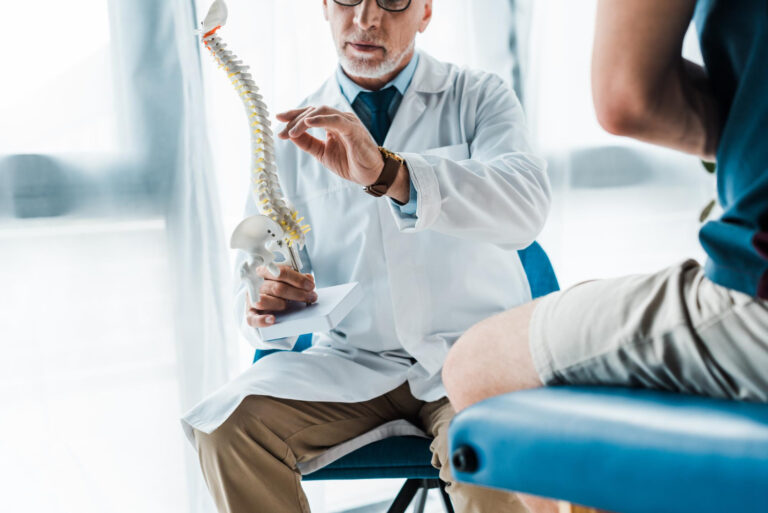Is Your Body Ready for Spinal Decompression? Key Things to Know
Back pain wears on you little by little. Whether it’s from your job, an accident, or just the way your body moves day to day, that pressure in your spine can start to mess with more than just your back. It might slow you down when you’re trying to play with your kids, make it uncomfortable to sit through a meal, or turn a regular night’s sleep into a struggle. That’s where spinal decompression comes in. It’s a pain relief option you might not know much about, but it’s helped many people get back to doing what they enjoy.
But how do you know if your body is ready for it? That’s an important question, especially since spinal decompression therapy isn’t for everyone. Whether your lower back flares up after sitting too long or you have pain that shoots down your leg, it helps to understand what this kind of care does and if it’s the right move for you. Before you jump all in, it’s worth slowing down and seeing if the signs line up.
Understanding Spinal Decompression Therapy
Spinal decompression therapy is a method used to gently stretch the spine with the goal of taking pressure off the discs, nerves, and joints. It doesn’t involve surgery or medication. Instead, you’re placed on a specialized table, and depending on your condition, certain parts of your back are slowly and safely stretched. This helps increase the space between your vertebrae, which can reduce pressure on pinched nerves or bulging discs. Over time, that extra space may help promote healing.
If you’ve ever had back pain that starts to wrap around your side, down your leg, or sends aching into your shoulders, spinal compression could be a factor. This kind of therapy is used to relieve pain from several conditions like:
– Herniated or bulging discs
– Sciatica
– Chronic back pain
– Degenerative disc disease
– Nerve compression affecting your arms or legs
Think of your spine as a column with soft cushions, called discs, between the bones. When those cushions shift or break down, they can push on nerves and cause pain in different areas of your body. Spinal decompression tries to help by easing that pressure without using needles or surgery.
If you’ve tried rest, heat, movement changes, or other types of care and you’re still feeling stuck with pain or stiffness, learning more about noninvasive solutions can give you a clearer path forward. Especially during the tail-end of summer in Johnson City, when people are trying to get outdoors and enjoy the last bits of warmth, it’s frustrating to deal with a body that says no when you’re trying to say yes.
Signs Your Body May Be Ready for Spinal Decompression
Not everyone with back discomfort needs spinal decompression. The therapy works best when the type and cause of your pain match with the way decompression actually helps. So how do you know if your body might be a good fit?
Here are some signs that may point to spinal decompression being a helpful next step:
– You’ve had chronic back pain that hasn’t improved with basic treatments like over-the-counter meds, stretching, or rest
– You feel sharp pain that starts in your lower back and moves through your hip or leg (sciatica is one reason this can happen)
– You notice tingling or numb sensations in your arms, fingers, legs, or feet
– Your pain gets worse after long periods of standing, walking, or sitting
– You’ve had an MRI or X-ray showing disc degeneration or a pinched nerve
If one or more of these sounds familiar, your spine may be under pressure in ways it shouldn’t be. A chiropractor in Johnson City can help assess how your spine is moving and whether decompression makes sense for your specific health needs. Some people confuse muscle strain with nerve compression, and while both can hurt, they often need different kinds of treatment. That’s why it’s better to work with someone who can check for both and walk you through your options.
These signs might seem small at first. Maybe you only notice pain after mowing the lawn or sitting on the couch too long. But when these patterns stick around, growing stronger and interrupting what used to be normal, it’s worth listening a bit closer to what your body is trying to say.
Preparing for Spinal Decompression Therapy
Once you’ve started thinking about spinal decompression, the next step is getting ready for it the right way. Your first visit to a chiropractor in Johnson City will usually begin with a simple conversation. Instead of jumping straight into treatment, you can expect questions about your symptoms, medical history, and daily life. Things like how the pain started, what eases it, and what triggers it matter more than you might think.
The provider will also look at how your spine moves, how your posture lines up, and whether there are signs of nerve pressure. In some cases, you may need X-rays or other images like MRIs, especially if you’ve had previous injuries. These tools aren’t always needed, but they can give a fuller picture of what’s going on inside your back.
Here’s what helps make your visit easier:
– Bring detailed notes on your pain, when it started, where it hurts most, and what makes it feel worse or better
– Share any major injuries or surgeries you’ve had in the past
– Tell them about current medications or treatments you’re using
– Be open about your goals and concerns
Spinal decompression isn’t a quick fix. The number of sessions often depends on how your body responds, and communication is key throughout the process. That’s why being upfront about everything from sleeping habits to exercise routines helps lay the groundwork for a smart plan. If pain also affects your knees or shoulders, they may assess those areas as well, especially if conditions like chronic knee pain or signs of neuropathy are involved. Pain doesn’t always stay in one place, and a good chiropractor will look at more than just your lower back.
Establishing a baseline before starting spinal decompression therapy also helps track your progress. You’ll have a clear starting point so you and your provider can see what’s working and where adjustments might help.
The Real Benefits After Sessions Begin
Getting relief is one of the biggest reasons people choose spinal decompression therapy in Johnson City. When treatment goes as planned, the difference can sneak up on you, like being able to bend over without that sharp twinge or finally sitting through a whole movie without shifting around in discomfort. Sometimes these changes start quickly. For others, it happens over a few weeks of sessions and small milestone wins.
Here are some possible benefits patients often notice:
– Relief from radiating pain in the hips, arms, or legs
– Reduced numbness or tingling
– Better balance and posture
– Less reliance on medications to manage pain
– Stronger range of motion in the back or neck
You might feel a little sore after the first session. That’s pretty normal as your body adjusts to this type of movement. It’s usually mild and doesn’t last long. If you experience anything more intense or unexpected, your provider should review your care plan with you. Communication keeps your recovery process running smoothly and gives space to tweak treatments when needed.
Another part people sometimes overlook is the importance of follow-up and consistency. Spinal decompression therapy works best when it’s carried out over time. Skipping sessions or stopping partway through the plan may slow your results. Staying on track helps your spine get the full benefit of the decompression and sustains the positive effects for longer.
Take the First Step Towards Comfort with Spinal Decompression in Johnson City
The goal of spinal decompression therapy isn’t just to manage pain. It’s to give people more moments of movement, comfort, and freedom in their everyday lives. Whether it’s walking the greenway on a warm Johnson City morning or getting through a workday without that dull pinch in your back, this care is about improving how you live.
Spinal decompression offers a way to quiet down nerve pain and reduce pressure that gets in the way of everyday tasks. It’s simple, noninvasive, and meant for people who want relief without turning to aggressive treatments. If the signs mentioned earlier match your experience, it may be time to take spinal decompression therapy more seriously.
The best way to find out what it can do for you is to talk with someone trained to understand your condition and build a plan around it. A good chiropractor in Johnson City will guide you through the steps, answer your questions honestly, and help assess if spinal decompression fits into your bigger wellness picture.
If you’re looking for a gentler way to manage back tension that’s making your nights harder, the team at Integral Wellness Co. can help you explore options that fit your needs. To better understand how this method works and how it may ease discomfort, learn more about spinal decompression in Johnson City and how it could be a step toward better rest and care.


